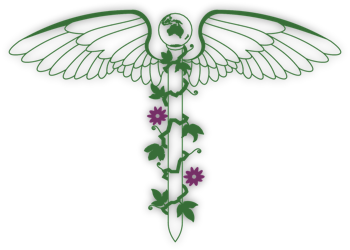Digestion
by Dr Jenna.
Since this newsletter is about gut health I thought I would talk about digestion itself. Many people do not understand how and where the body digests food. The process of digestion actually begins with sight and smell. When we smell and see food it makes us salivate which produces saliva. This wets our mouth making it ready for the food. When we actually eat that food the saliva is mixed with the food while we chew. This is where starch is broken down. Saliva also starts the breakdown of fat and carbohydrates. The process of chewing breaks the food into smaller bits that are easier to digest and it mixes the food with the saliva which starts the break down process. Most of us do not chew our food properly. Grandma always use to say chew 100 times before swallowing and grandma was right. The more we chew our food the better we start the digestion process. The starch gets broken down, the foods is broken into smaller particles that are easier to digest. When we grab meals on the run we often gulp our food and miss this important step. Are you eating right now? Well put this down and concentrate on your meal.
When then swallow and the food particles mixed with the saliva are transported to our stomach through the oesophagus. This is done by peristalsis which is a rhythmic contraction of the muscle along the oesophagus that passes the food along. Once in the stomach the food particles are mixed with acid and pepsin. The stomach is a strong muscle and churns the food with the acid breaking it down into even smaller pieces. The acid and pepsin help to start the break down protein. The acidic environment also helps to kill off bacteria and viruses that would otherwise get into our system. The Acid is very caustic to the lining of the stomach so we produce a slimy layer to protect the wall of the stomach from the acid. Often people take acid blockers these days which can block your food digestion. Many times the problem can be not eating right or having to may acid producing things like coffee, alcohol and tobacco. Think about how you eat before reaching for those antacids. Do you watch TV when you eat? Do you drink acidy soft drink with your meal? This can cause more stress and acid production too. It takes 1-2 hours for the stomach to complete its part of digestion. During that time the body is shunting blood to the stomach and away from other parts of the body. This is why we were always told to wait 1 hour after eating to go swimming. It does make sense. The body needs to concentrate on digesting, not swimming or working or anything else. If we start doing something, blood needs to be shunted back to the brain or muscles and there is less there for digestion. Relaxing after eating and enjoying your meal does help digestion, I think this is part of the magic of the Mediterranean Diet. They take their time eating and savouring what they eat and then have siesta after the meal.
The chyme (digested food mixed with acid and pepsin) passes through the pyloric sphincter and enters the duodenum which is the first part of the small intestine. Bicarbonate is added here to neutralize the acid. Our digestive enzymes are dumped in from the pancreas. These are again stimulated by smelling and tasting the food. The digestive enzymes further break down the chyme. Fat is broken down mostly in the small intestine with lipase from the pancreas and bile which is produced in the liver and stored in the gallbladder. When we eat a fatty meal it stimulates the gallbladder to dump bile into the small intestine. Sugar digestion mainly takes place here as well, though it starts in the mouth with saliva. A large amount of nutrients are absorbed in the small intestine through the villi.
What is left travels into the large intestine. Here bacteria work to further break down our food. Having healthy bacteria in our gut is important in digestion. When we take antibiotics this can kill off our healthy bacteria and decrease our ability to digest food. Some of our vitamins are produced by the bacteria in our colon, as well as biotin and vitamin K. Vitamin K is critical in our blood clotting mechanism. Some foods take a long time to transit the digestive tract. Meat probably takes the longest to digest. Fluid is reabsorbed in the large intestine. The large intestine is about 1.5 meters long.
There are also many hormones involved in the digestive process which makes it even more complex. To have good healthy digestion we need to have all the parts of our digestive tract working well. How healthy is your gut?

